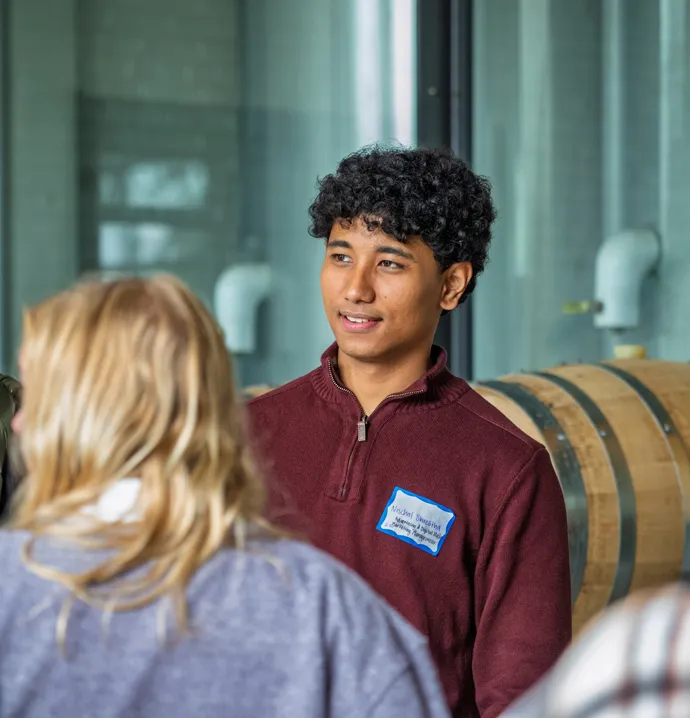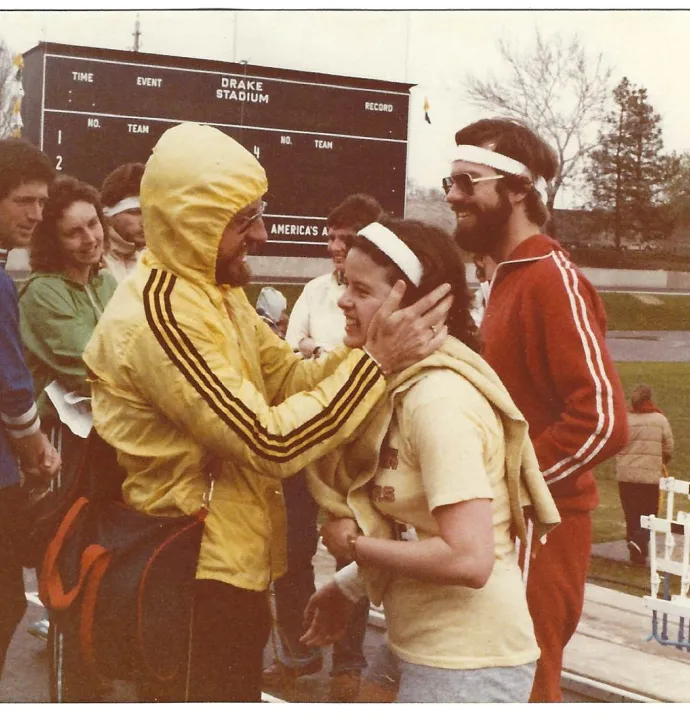UNI prairie project aims to improve water quality
UNI prairie project aims to improve water quality
It was an otherwise uneventful day when he saw it — the vibrant, unmistakable wings of a pheasant, flapping against the autumn winds. It was a rare occurrence on the Black Hawk County farmland, and it made Jerry Kramer, owner of the property, take note of the other recent changes that have popped up since he’d had prairie strips planted on his land — a resurgence of flowering plants and the butterflies that pollinate them.
"That was the first time in years I’ve seen [a pheasant] on either of our farms,” Kramer said. “On the practical side, the two strips have successfully mitigated a soil erosion issue. The three-year-old planting has become especially colorful; it’s interesting walking through it and seeing the spectacular insect life.”
The changes were surprising for Kramer, but they’re not unusual occurrences on farms with prairies integrated into them. In a 2017 study, Iowa State University researchers found that planting a perennial mix of native flowers and grasses may help farmers dramatically reduce the loss of soil and nutrients on their land while attracting birds and pollinators. According to Laura Jackson, director of UNI’s Tallgrass Prairie Center, prairies are increasingly becoming one of the only places where some native wildlife can be found.
“There’s a whole group of birds that used to live in Iowa that are nearly gone,” Jackson said. “Really pretty birds that have beautiful songs and you hardly see them anymore — unless you have a prairie.”
The environmental implications of cleaner water and farmland impact us all.
“We’re losing our capacity to feed people,” said Jackson. “When we abuse our soil and water, that affects the long-term ability of our land to continue to provide.”
A new program at the Tallgrass Prairie Center is addressing this issue head-on. And thanks to a $200,000 grant from the U.S. Department of Agriculture, the program will be able to expand their reach far beyond the local farms they work with.
Addressing an issue
UNI’s Tallgrass Prairie Center is devoted to restoring native vegetation throughout the state. In 2015, the center launched the Prairie on Farms program to help reduce decreasing water quality and soil erosion by partnering with 10 northeast Iowa landowners to plant prairies on their farmland. Prairies help address these issues by not only reducing soil loss but by also preventing nitrogen and phosphorus — which farmers use to fertilize their fields — from being washed off into rivers and streams.
The pilot program focused especially on prairie strips, which are 30-120 foot wide patches of prairie mixed into farm fields. This was inspired, in part, by the work already happening at ISU.
Participants in UNI’s pilot program, including Kramer, saw significant improvements on their farms. The Tallgrass Prairie team is now building on that success with the new grant program. The grant project is focused on creating case studies about the Prairie on Farms program to help illustrate the effectiveness of prairie strips in supporting soil and water quality to landowners.
To do that, the team will also establish one or two new prairies over the three-year grant period to include in their studies.
“We want diverse examples so we can hopefully connect with other landowners across the state and pair them up with an appropriate type of case study,” said Ashley Kittle, program manager for the Prairie on Farms program. “We’re going to get a bigger reach this way. Rather than us just going to plant prairie, this way we’ll be educating a lot more people.”
“We can do this better…”
Education is a key part of the program. Changes in land ownership are increasing the number of non-farmer landowners, highlighting the need for raising awareness of conservation issues among that group as well. The UNI Tallgrass Prairie Center is in the field, helping them get the information they need to support preservation.
“Many farm owners do have a sense of responsibility. Even if they don’t farm themselves, they want to run their business in a responsible way,” said Jackson. “This is a trend that’s only going to get bigger. The owners care about the land and water. They ask tough questions. We’re making sure that they have the information, tools, knowledge and relationships to use prairie, along with other conservation practices, to address them.”
That will make an impact far beyond their own land. Just as unsustainable agricultural practices can have far-reaching impacts, so, too, do conservation efforts — improving agriculture improves lives, Jackson said.
“On the surface, we have a very productive agriculture, but there’s declining water quality, declining quality of life,” said Jackson. “It doesn’t have to be that way. We can do this better. We can do agriculture better and make life better for everybody.”




